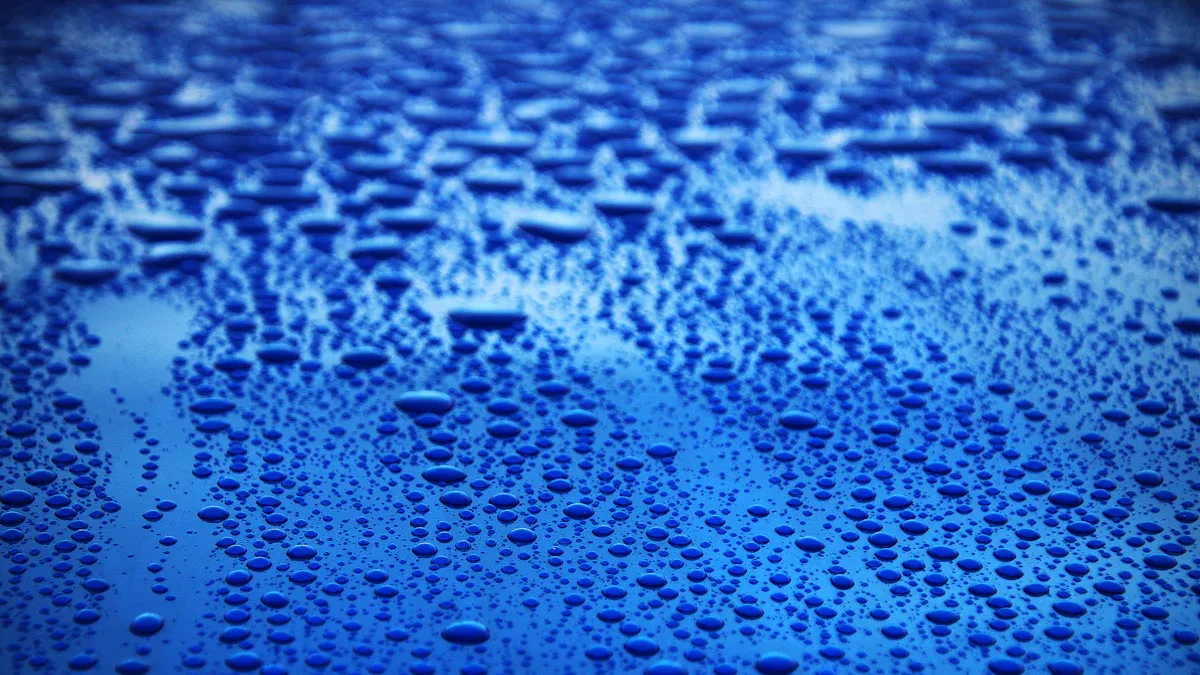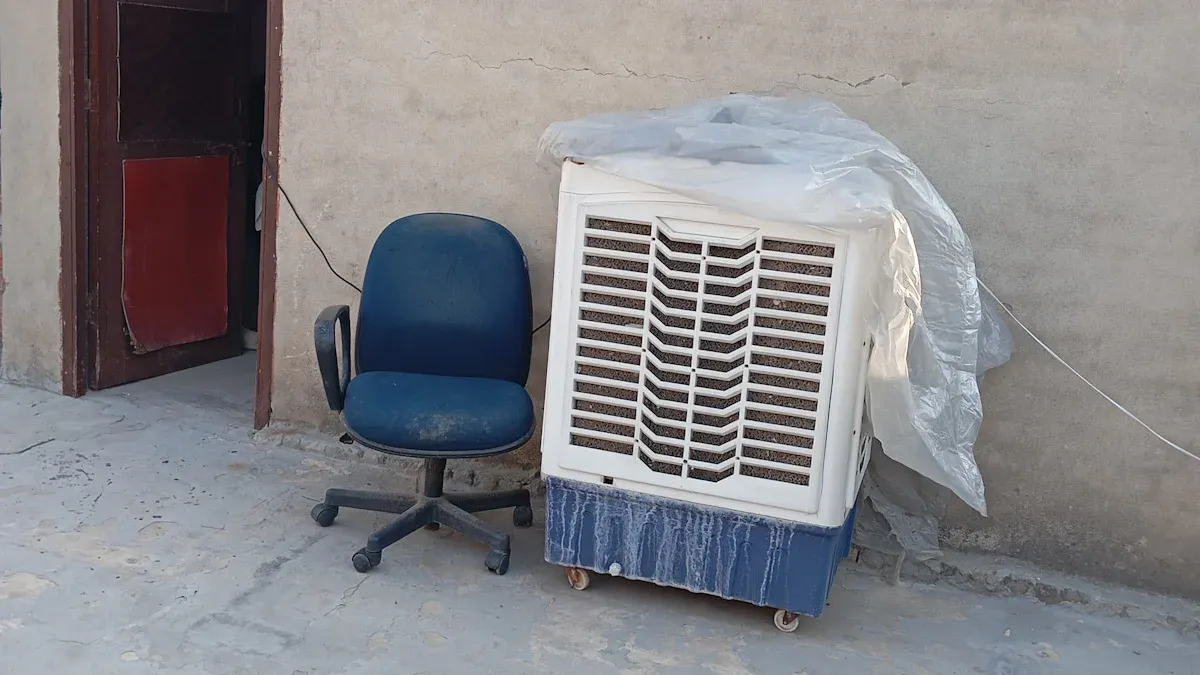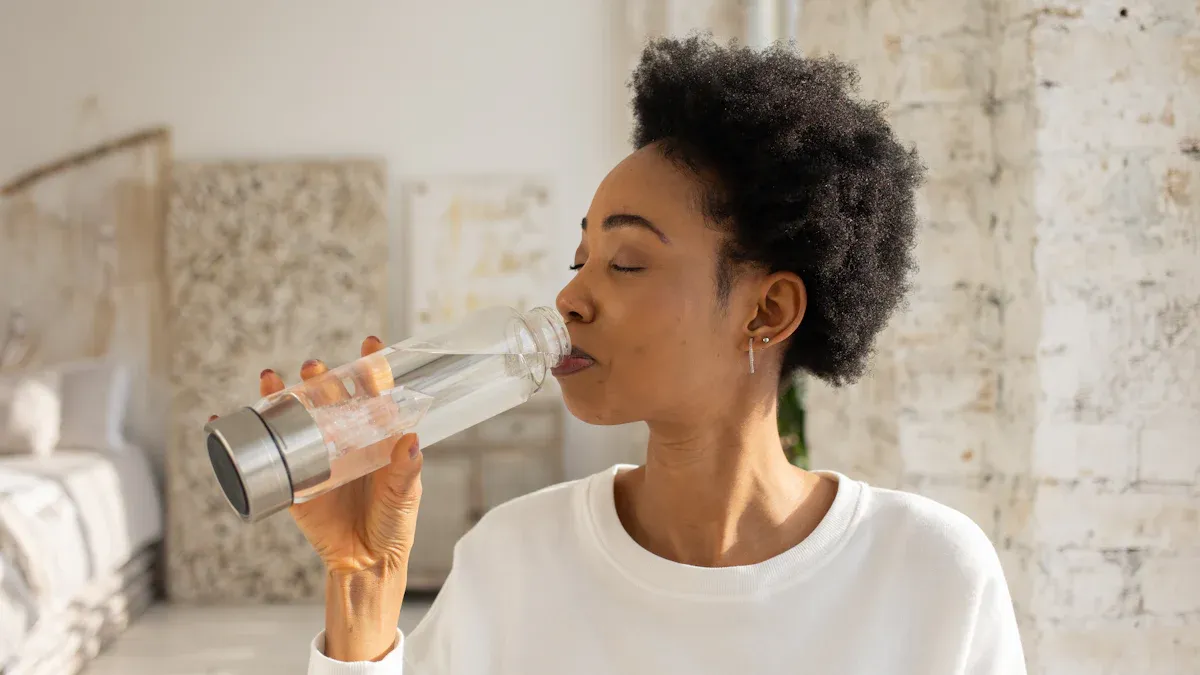
You can make clean and safe drinking water from air using an air-to-water machine. This machine takes water from the air. It then cleans and filters the water. After that, you get fresh water to drink. Almost 3.2 billion people in the world do not have safe water to drink. Many people live where water is hard to find or dirty. Air-to-water machines give a good way to make water from humidity. They work even in places where other water is not safe or easy to get.
Air-to-water machines take water from the air. They use cooling and special materials to make clean drinking water. These machines clean the water in many steps. They remove dust, germs, and chemicals. This makes the water safe to drink. They help the environment by cutting down plastic waste. They also lower pollution from moving water. Some use green energy like solar power. You need to clean filters and check parts often. This keeps the machine working well. It also makes sure the water is safe. Air-to-water machines work best in warm, wet places. They can still give water off-grid or in emergencies. This works if they have enough energy.
An air-to-water machine is a device that takes water from the air. It is also called an machine that makes water from air or a moisture vaporator. The main science behind it is condensation. When air gets cold enough, water vapor turns into liquid water. The machine uses fans to pull in air. Then, it blows the air over cold coils like an air conditioner. This makes water droplets form. The machine collects these droplets.
Tip:The process works best when the air is warm and humid. For example, at 27°C (80°F) and 60% humidity, the machine makes the most water. Some advanced models work in cooler or drier places. They can run at 15% humidity and 7°C (45°F).
Here is a table that shows the main science ideas that help these machines work:
|
Principle |
Description |
Mechanism/Example |
|---|---|---|
|
Condensation |
Cooling air below its dew point turns vapor into liquid water. |
Uses refrigerants and coils to cool air and collect water. |
|
Hygroscopy |
Special materials absorb moisture from the air and release it when heated. |
Materials like MOFs and zeolites work even in low humidity. |
|
Hybrid Systems |
Combine absorption and condensation to get more water in different conditions. |
Use both cooling and special materials for better results. |
|
Environmental Factors |
Temperature and humidity affect how much water you get. |
Higher temperature and humidity mean more water. |
|
Purification |
Filters and purifies the collected water to make it safe to drink. |
Removes dirt, germs, and chemicals from the water. |
Some machines use hygroscopic materials. These are things that soak up water from the air. They can work even when the air feels dry. When heated, they let go of the trapped water. The machine collects this water. This way uses less energy than just cooling. It works well in places with low humidity.
Note:Air-to-water machines use active cooling. This means they control the temperature to get more water than natural dew. Natural dew only forms at night when the air cools down. It makes much less water.
Filtration and Purification
After the machine collects water, it needs to make sure the water is safe to drink. The water goes through many filters and cleaning steps. First, the air passes through filters that catch dust and dirt before it hits the cold coils. When water forms, it goes through more filters. These remove tiny bits, bad smells, and leftover chemicals.
Here is a step-by-step list of how the filtration and cleaning work:
The machine uses air filters to catch dust and other particles from the air.
Water dust filters remove any dirt that might have gotten into the condensed water.
Pre-carbon and sediment filters take out color, odor, and physical impurities as small as 5 microns.
Reverse osmosis (RO) membranes filter out even smaller particles, down to 0.0001 microns.
TCR filters, which use activated carbon and silver, kill bacteria and improve the taste.
Some machines use atmospheric water generator for saleorgermicidal UVC lampsto destroy germs and viruses.
Safety Reminder:These steps make sure the water is pure and safe, even if the air is not clean. The water meets international standards like NSF/ANSI/CAN 61 and 372, which test for health and safety.
Air-to-water machines use these many steps to give you clean, fresh water. You do not need to worry about heavy metals, microplastics, or germs. The water is ready to drink, even if you live where regular water is not safe.

First, air goes into the air-to-water machine. Strong fans pull in moist air from inside or outside. The air moves through filters before it gets cold. These filters take out dust, pollen, and other things in the air. Some machines use special filters to catch tiny particles like exhaust gases. UV sterilization systems kill bacteria and germs in the air. This makes sure only clean air goes into the condensation chamber. Clean air helps keep your water safe from bad stuff.
Tip: Cleaner air gives you better water. Check and change the air filters often to keep your machine working well.
After the air is clean, the machine cools it down. Cold coils inside the machine turn water vapor into drops. The machine gathers these drops in a chamber. The water then goes through more filters. These include sediment filters, carbon filters, and sometimes reverse osmosis membranes. Some machines use UV light or ozone to kill any germs left. The clean water goes into a storage tank. Now, the water is ready for you to drink.
Here is a simple step-by-step list of the process:
Fans pull in moist air.
Air passes through filters and UV light.
Cold coils condense water vapor into liquid.
Machine collects water droplets.
Water passes through more filters and purification steps.
Clean water stores in a tank for you to use.
Note:Most air-to-water machines make 18 to 120 gallons of water each day. How much water you get depends on the humidity and temperature where you live.
Modern air-to-water machines have many safety features. They use several filters and UV sterilization to keep water pure. Storage tanks are sealed to stop anything from getting in. Many machines have sensors that check water quality and warn you if there is a problem. Some machines stop working if filters need changing or if water is not safe.
|
Safety Feature |
What It Does |
Why It Matters |
|---|---|---|
|
Multi-layer filtration |
Removes dust, dirt, and chemicals |
Keeps water clean and safe |
|
UV sterilization |
Kills bacteria and viruses |
Protects your health |
|
Sealed storage tanks |
Prevents outside contamination |
Maintains water purity |
|
Quality sensors |
Monitors water and alerts you to problems |
Ensures you always get safe water |
Energy Use: Most air-to-water machines use about 0.5 to 1.0 kWh of electricity for each liter of water. This is about the same or better than many other water cleaning systems. You can use solar panels or other green energy to power your machine and help the planet.
With these steps and features, you get clean, safe drinking water whenever you need it.

When you use an air-to-water machine, you help the planet. These machines make water without hurting nature. You do not need to buy bottled water. This means you use less plastic. You also do not use chemicals that can harm rivers and lakes. Many machines work with solar panels or other green energy. This helps lower carbon emissions.
Here are some main ways these machines help the environment:
You use less plastic because you do not buy bottles.
You make water where you need it, so trucks do not have to deliver it.
You help keep rivers and wells safe because the machine does not take water from them.
You do not add chemicals to the water, so there is less pollution.
You can use solar power or other green energy to run your machine.
|
Environmental Benefit |
Explanation |
|---|---|
|
Reduction of Plastic Waste |
You do not need bottled water, so less plastic ends up in landfills or oceans. |
|
Lower Transportation Emissions |
Water is made at your place, so trucks do not need to bring it. |
|
Preservation of Water Sources |
The machine uses air, not lakes or wells, so nature stays safe. |
|
Decentralized Infrastructure |
You do not need big water plants or pipes, so you save resources. |
You can use air-to-water machine seven if you live far from city water. Some models work with solar panels and do not need power from the grid. You do not need plumbing or a plug. This makes them great for cabins, RVs, boats, or places hit by storms. You get clean water anywhere and anytime.
Tip:If you want to live off the grid or travel, pick a model that works with solar power. You will have water even if the power goes out.
Air-to-water machines work in many places. You can use them at home, at work, or when you travel. They are good for schools, hospitals, farms, and emergencies. You do not have to rely on city water or wells. This gives you freedom and peace of mind. You get safe water wherever you are, even if local water is not safe.
 online service
online service sale@accairwater.com
sale@accairwater.com +86 18559227773
+86 18559227773